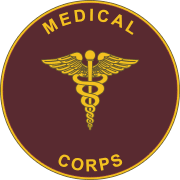Template:Caduceus confusion summary

It is relatively common, especially in the United States, to find the caduceus, with its two snakes and wings, used as a symbol of medicine instead of the Rod of Asclepius, with only a single snake. This usage was popularised largely as a result of the adoption of the caduceus as its insignia by the U.S. Army Medical Corps in 1902 at the insistence of a single officer (though there are conflicting claims as to whether this was Capt. Frederick P. Reynolds or Col. John R. van Hoff).[1][2]
The Rod of Asclepius is the dominant symbol for professional healthcare associations in the United States. One survey found that 62% of professional healthcare associations used the rod of Asclepius as their symbol.[3] The same survey found that 76% of commercial healthcare organizations used the Caduceus symbol. The author of the study suggests the difference exists because professional associations are more likely to have a real understanding of the two symbols, whereas commercial organizations are more likely to be concerned with the visual impact a symbol will have in selling their products.
The long-standing and abundantly attested historical associations of the caduceus with commerce are considered by many to be inappropriate in a symbol used by those engaged in the healing arts.[2] This has occasioned significant criticism of the use of the caduceus in a medical context.
As god of the high-road and the market-place Hermes was perhaps above all else the patron of commerce and the fat purse: as a corollary, he was the special protector of the traveling salesman. As spokesman for the gods, he not only brought peace on earth (occasionally even the peace of death), but his silver-tongued eloquence could always make the worse appear the better cause.[4] From this latter point of view, would not his symbol be suitable for certain Congressmen, all medical quacks, book agents and purveyors of vacuum cleaners, rather than for the straight-thinking, straight-speaking therapeutist? As conductor of the dead to their subterranean abode, his emblem would seem more appropriate on a hearse than on a physician's car.
- ↑ F.H. Garrison, "The Use of the Caduceus in the Insignia of the Army Medical Officer", in Bull. Med. Lib. Assoc. IX (1919-20), 13-16
- ↑ Jump up to: 2.0 2.1 Engle, Bernice (Dec 1929). "The Use of Mercury's Caduceus as a Medical Emblem"". The Classical Journal 25 (1): 205.
- ↑ Friedlander, Walter J (1992). The Golden Wand of Medicine: A History of the Caduceus symbol in medicine. Greenwood Press. ISBN 0-313-28023-1.
- ↑ An allusion to John Milton's description of Belial in Paradise Lost]] II.113-114.
